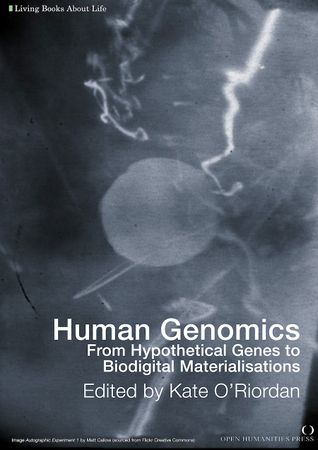Human Genomics: Difference between revisions
No edit summary |
|||
| Line 7: | Line 7: | ||
== Contents == | == Contents == | ||
Introduction | Introduction | ||
| Line 14: | Line 13: | ||
Sections | Sections | ||
Section: 1 | Section: 1 | ||
Section: 2 | |||
Section: 3 | Section: 2 | ||
Section: 4 | |||
Section: 5 | Section: 3 | ||
Section: 6 | |||
Section: 7 | Section: 4 | ||
Section: 5 | |||
Section: 6 | |||
Section: 7 | |||
Section: 8 | Section: 8 | ||
Section: 9 | |||
Section: 9 - The new genetics | |||
The genetics of the 1950s helped to signal a break from the associations that had been made between human genetics and forms of social eugenics in the late 19th century and first half of the 20th century. This period of ‘discovery’ science also lead the way in providing narratives of scientific heroes as ordinary guys (McNeil). A version of scientific discovery that still resonates today as genetic heroics were reproduced by Craig Venter and John Sulston during the Human Genome Project, in biographies, autobiographies, popular science writing, news media and documentary. | |||
In July 25, 1953 Rosalind Franklin and Gosling detail the distinctions between the A and B structures of the double helix in DNA and Watson and Crick publish their article on the structure of DNA. | |||
*[http://www.nature.com/nature/dna50/franklingosling2.pdf Franklin R. and Gosling R.G. 1953. Evidence for 2-Chain Helix in Crystalline Structure of Sodium Deoxyribonucleate Nature 172, 156-157 (1953)] | |||
*[http://www.nature.com/nature/dna50/watsoncrick.pdf Watson J.D. and Crick F.H.C. 1953. A Structure for Deoxyribose Nucleic Acid Nature 171, 737-738 (1953)] | |||
Attributions | Attributions | ||
Revision as of 12:12, 31 July 2011

Human genomics: from hypothetical genes to biodigital materialisations
Edited by Kate O'Riordan
Contents
Introduction
Sections
Section: 1
Section: 2
Section: 3
Section: 4
Section: 5
Section: 6
Section: 7
Section: 8
Section: 9 - The new genetics
The genetics of the 1950s helped to signal a break from the associations that had been made between human genetics and forms of social eugenics in the late 19th century and first half of the 20th century. This period of ‘discovery’ science also lead the way in providing narratives of scientific heroes as ordinary guys (McNeil). A version of scientific discovery that still resonates today as genetic heroics were reproduced by Craig Venter and John Sulston during the Human Genome Project, in biographies, autobiographies, popular science writing, news media and documentary.
In July 25, 1953 Rosalind Franklin and Gosling detail the distinctions between the A and B structures of the double helix in DNA and Watson and Crick publish their article on the structure of DNA.
- Franklin R. and Gosling R.G. 1953. Evidence for 2-Chain Helix in Crystalline Structure of Sodium Deoxyribonucleate Nature 172, 156-157 (1953)
- Watson J.D. and Crick F.H.C. 1953. A Structure for Deoxyribose Nucleic Acid Nature 171, 737-738 (1953)
Attributions
